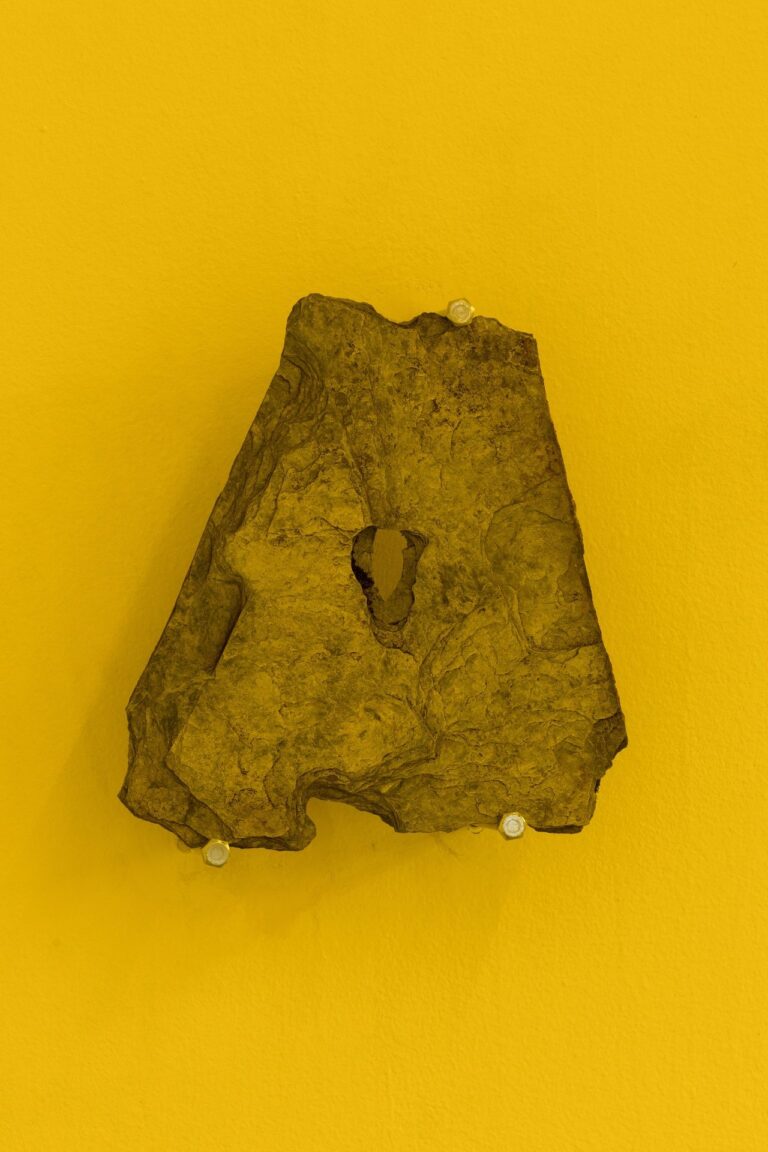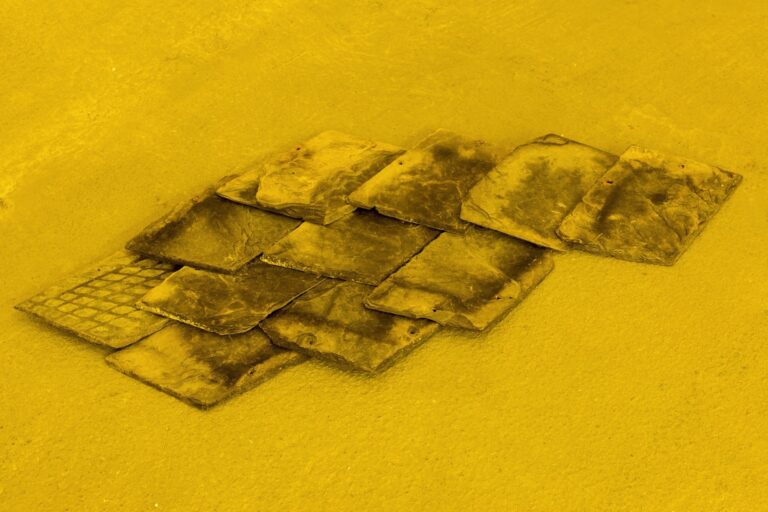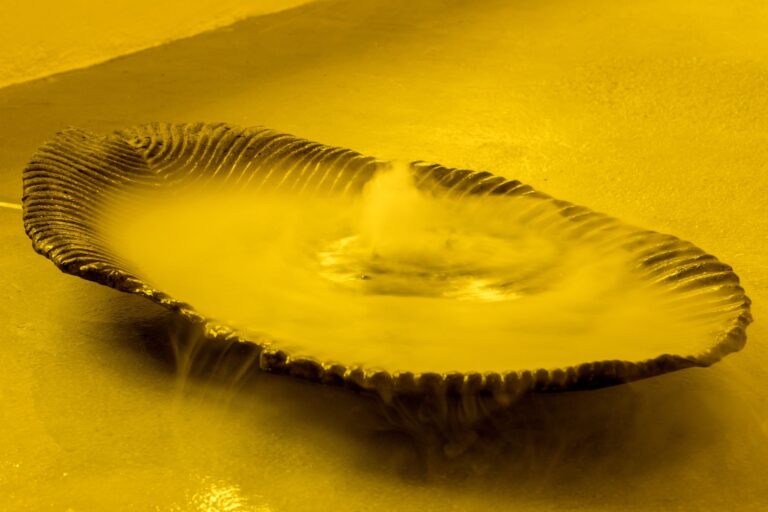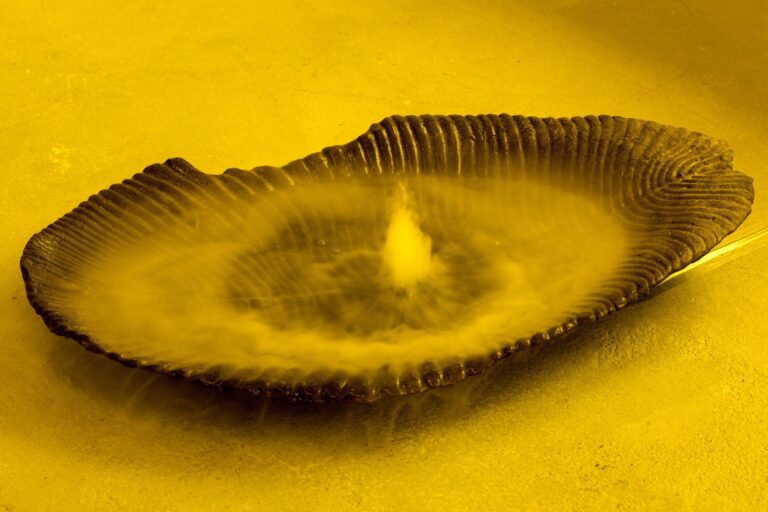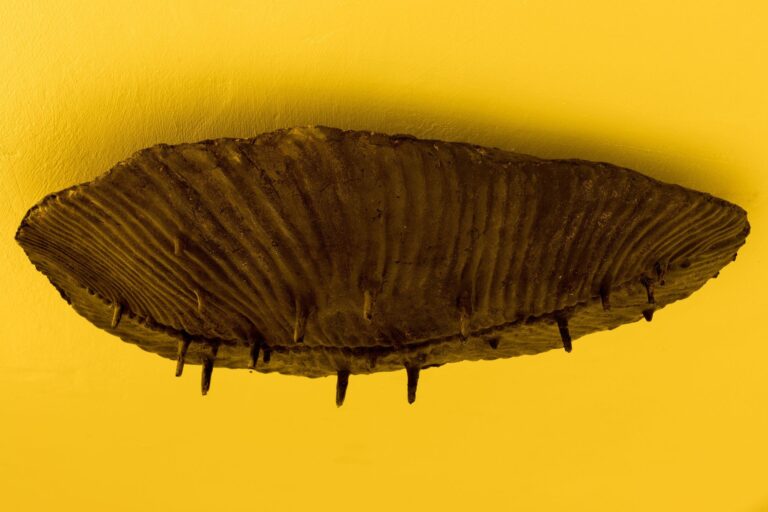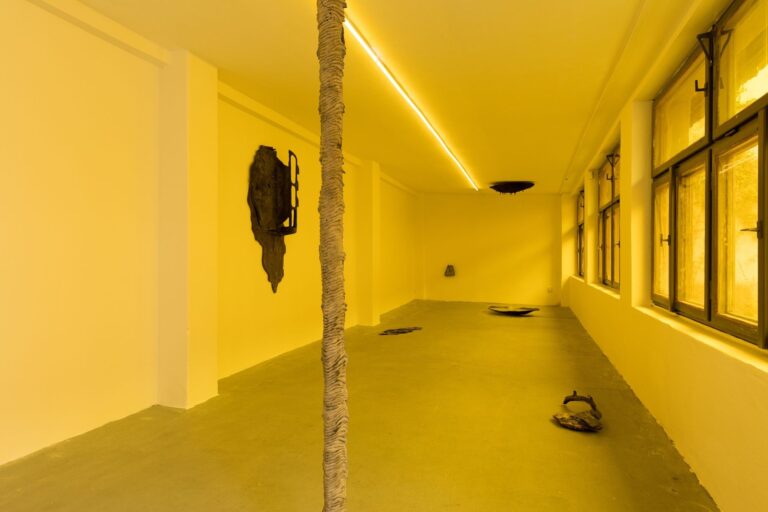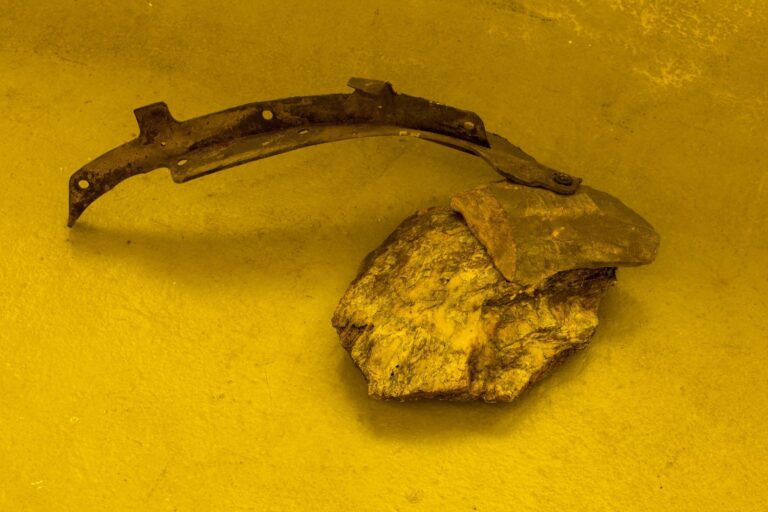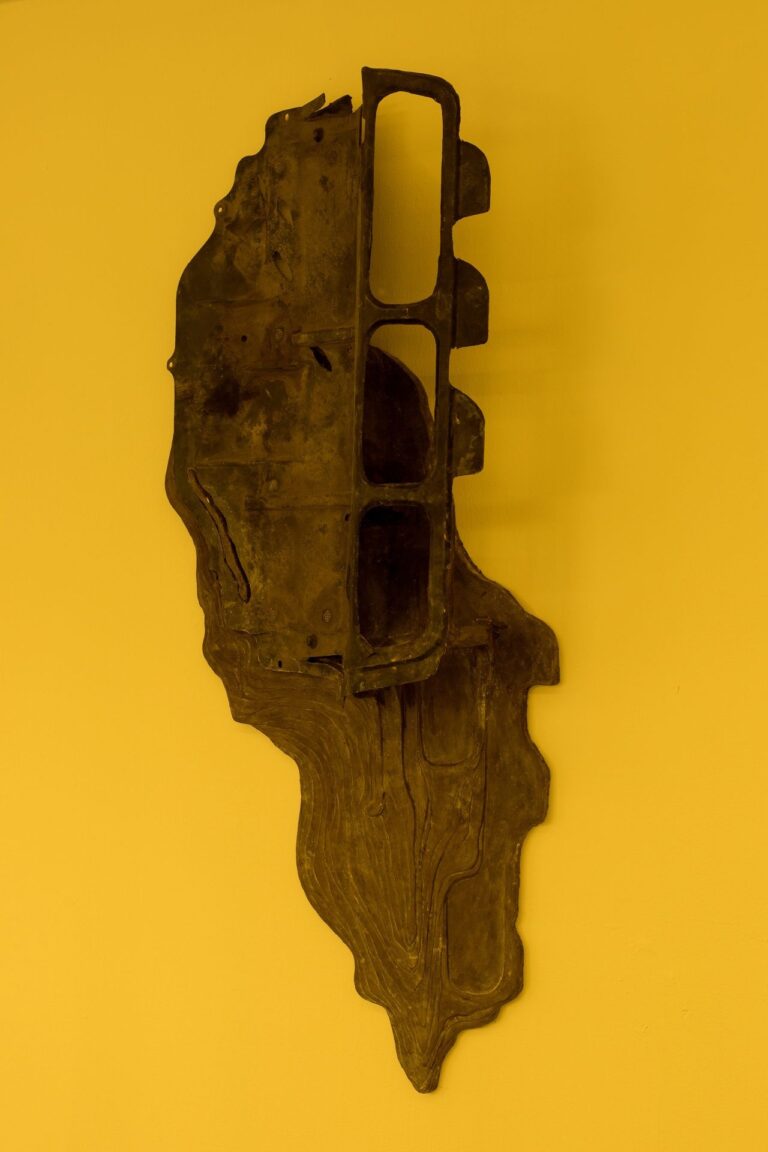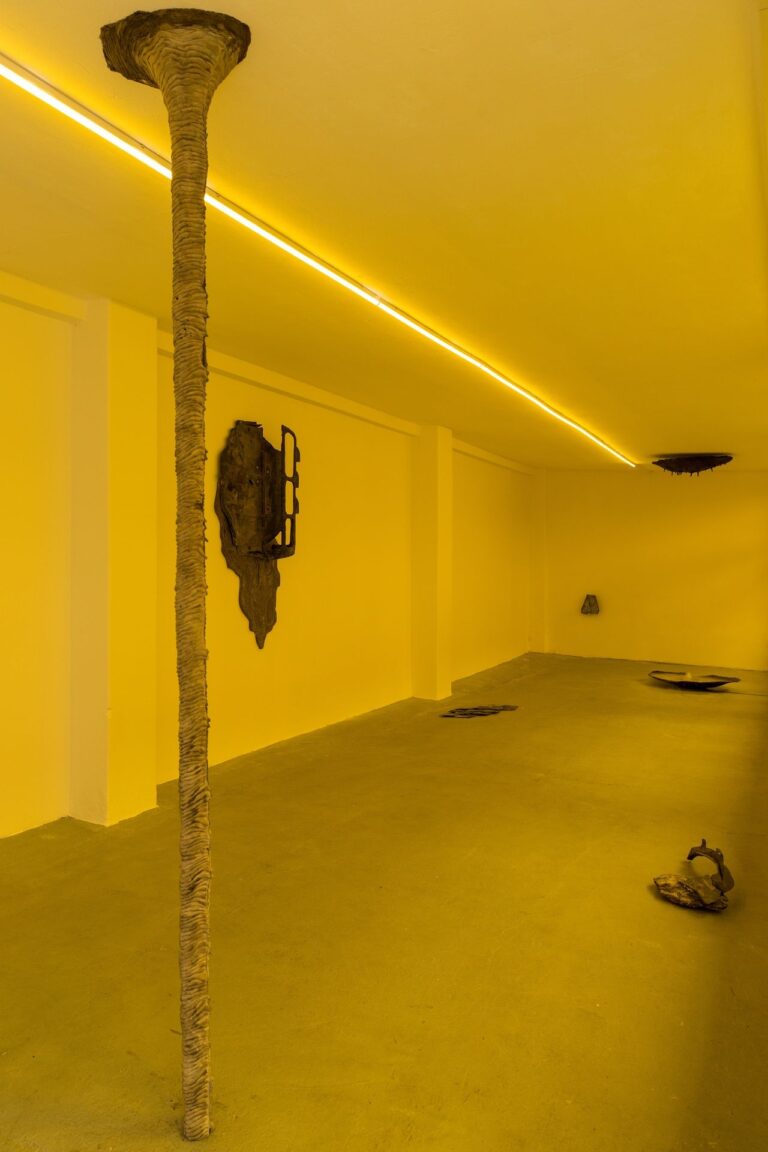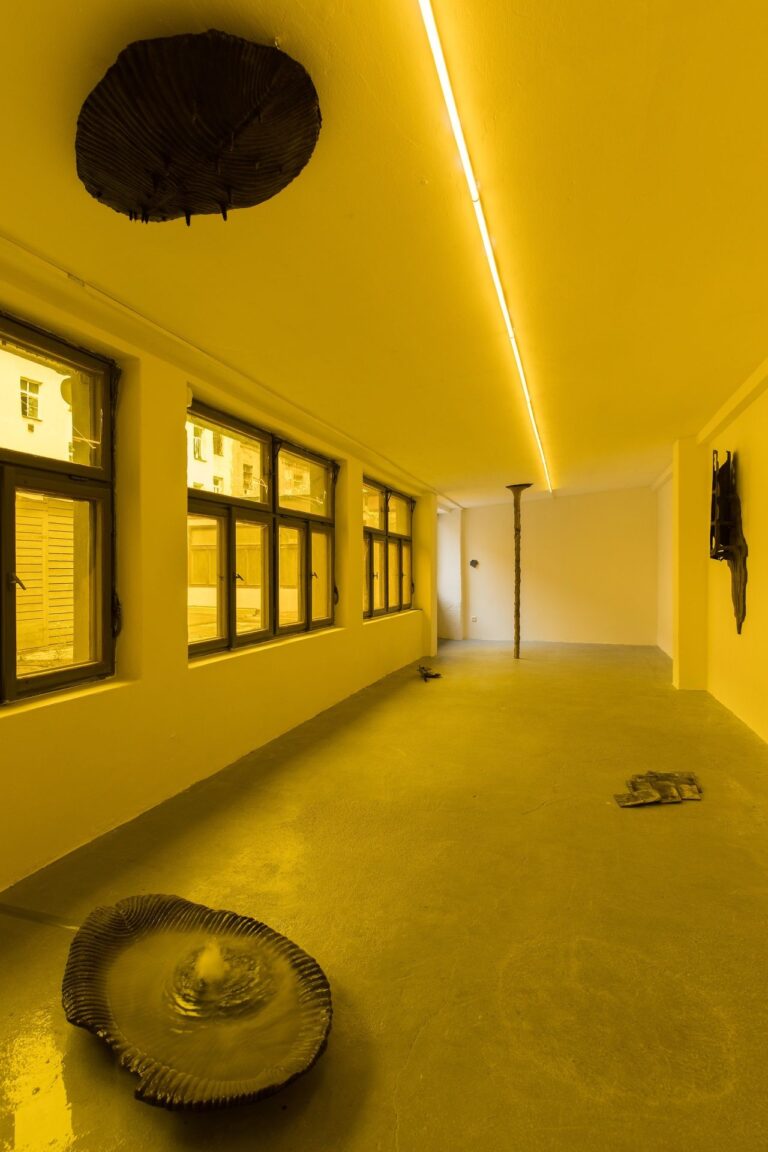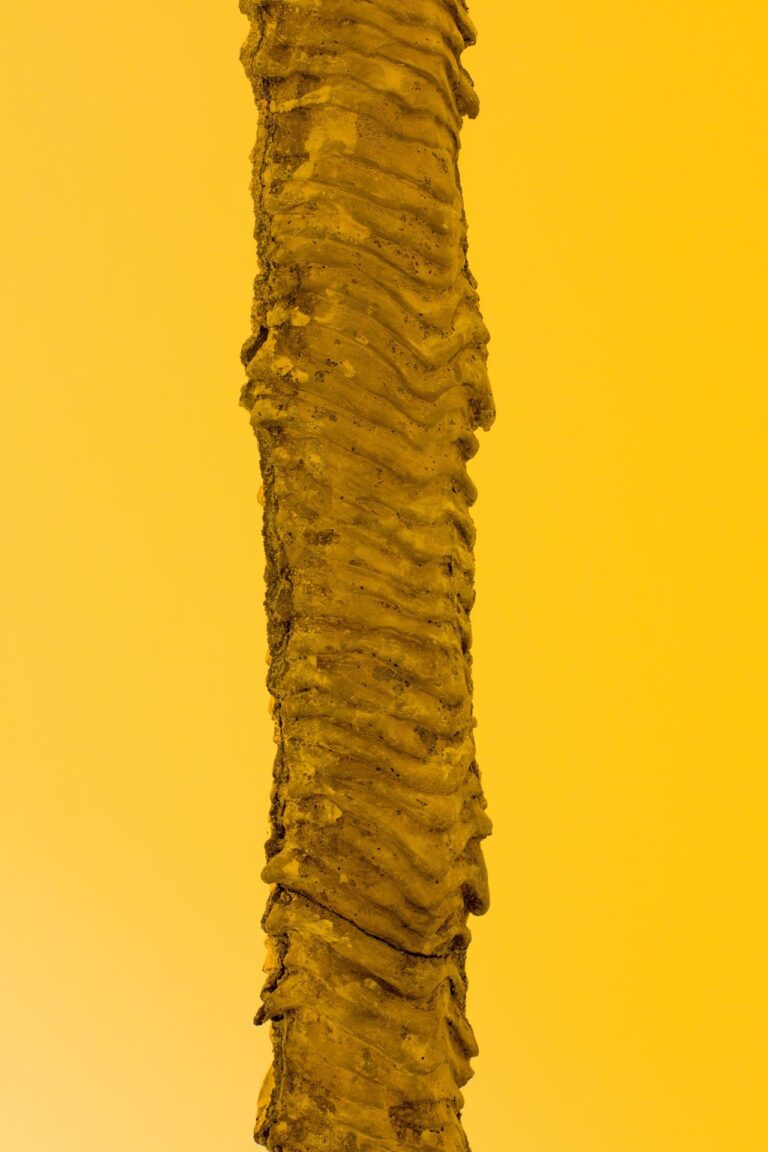Endless Flow
Endless flow in gallery Hunt Kastner Project Room
23 September – 4 November 2023
The philosopher Jane Bennett, in the book Vibrant Matter, describes the living, active qualities of inanimate objects that we have ceased to perceive fully because of our habit of dividing the world into a hierarchy of „dull matter (it, things)“ and „vibrant life (we, beings).“ During a walk down Cold Spring Lane in Baltimore one day, Bennett was struck by a group of found objects: one large men’s black plastic work glove, one dense mat of oak pollen, one unblemished dead rat, one white plastic bottle cap and one smooth stick of wood. She found that the reason these „non-human bodies“ had an effect on her was not some passive intractability, but their ability to actively produce an effect. She describes them as „vibratory – at one moment disclosing themselves as dead stuff and at the next as live presence.“ According to her, even raw material can have certain characteristics of life, their future forms not predetermined but subject to a spiral of relationships where the different parts react to one another.
Jindřiška Jabůrková is a similarly sensitive observer. She imagines inanimate matter as an organism, as an actor that does not passively enter the world, but actively intervenes in it, just like a human being, an animal or a plant. In the exhibition Endless Flow, the main matter she presents is waste, excess, what is abandoned – for example, rubble from a building or a piece of a plastic object. She is interested in how the matter that we have processed for our own benefit, but at some stage discarded, evolves further, independently, apart from human intervention. It is the residue of human activity, reabsorbed by nature imaginatively restoring its control.
The exhibited objects combine three basic principles of Jindřiška‘s work. Sometimes she takes a found object-waste from her wanderings through the city and sculpts it in her studio. For example, a part of a car bonnet merges with a concrete base, which in its gently graded surface evokes layers of soil, the memory carrier of nature, into which a piece of the bodywork sinks, and the boundary between what is an artificial human product and what is natural ceases to exist. At other times, she is captivated by the form of the object itself, which she does not „repair” in any way, letting itsappearance have its own effect. Slate, for example, has natural cleavages, is fissile which allows us to create thin slabs of this rock and so the natural lines, the boundaries of the layers become visible and act as a script, an imprint of the past.
Sometimes there is no need to physically take something from the landscape, storing the object in our memory is sometime enough. Jindřiška uses images she has seen and the natural processes of decomposition, settling and rearrangement to create entirely new work. She has long been interested in calthemites, which are stalactites that grow on bridges and other constructions caused by precipitation, from water dripping off concrete and other building materials. Here, water is the driving force behind the transformation of matter, triggering a chemical reaction. The water droplets set the rhythm of the growth of the resulting formation, which is gradually lengthened with gravity.
Jindřiška is interested in the tensions arising from the coexistence of humans and nature and often imagines what the life of objects would be like in a world from which humans have disappeared. Her guide to survival in an apocalyptic landscape is hidden in the need for mindfulness that leads to an understanding of everything we encounter on Earth.
Text Anežka Chalupová and Vít Novák
